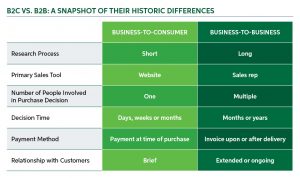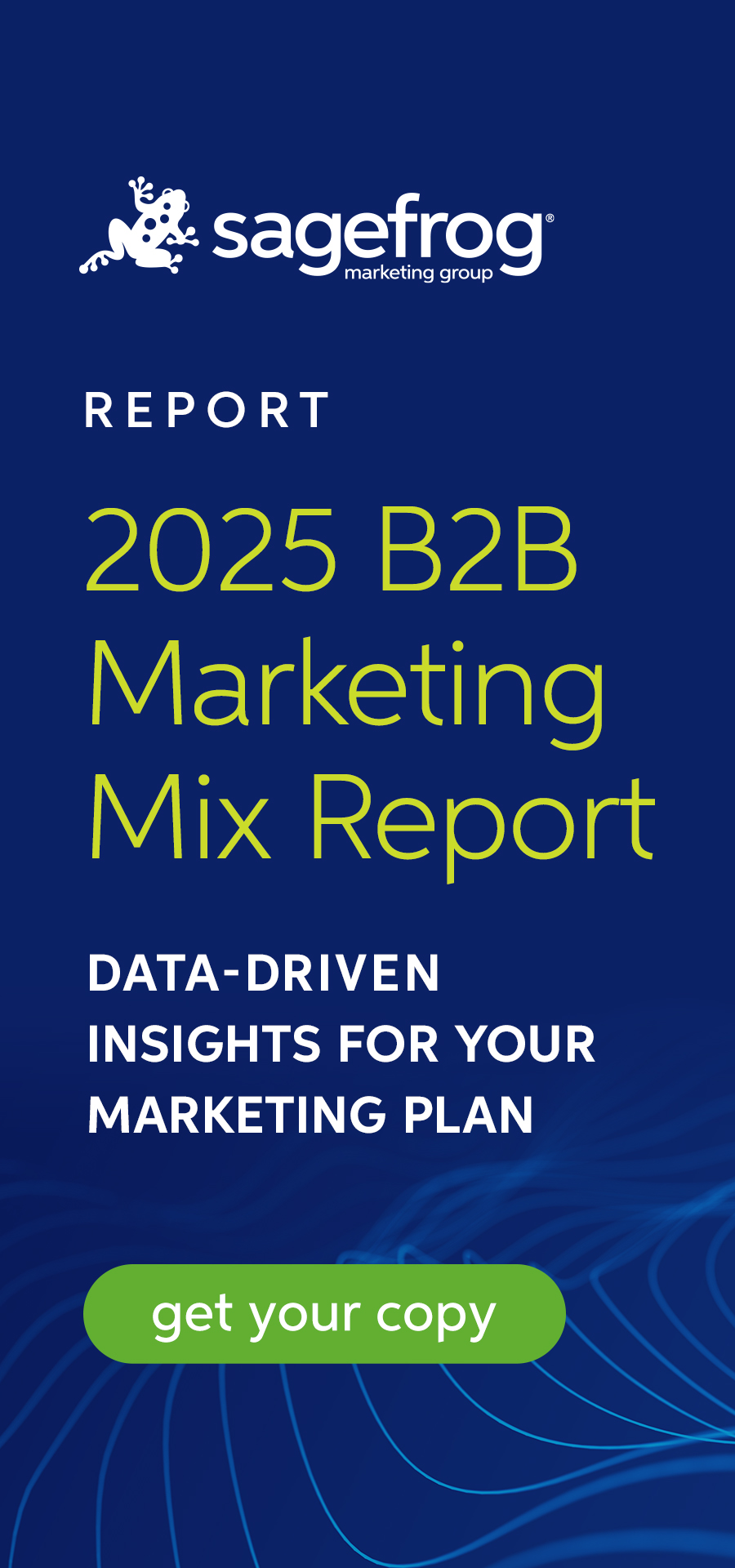The way we shop is changing.
With services like Amazon Prime, consumers are making purchases with one click and receiving products faster than ever. Most organizations have a clear and distinct business model: business-to-business (B2B) or business-to-consumer (B2C)—and have a corresponding sales methodology to support it.
But the B2B sales cycle is beginning to resemble that of B2C, as people become accustomed to the frictionless convenience of their frequent and desirable B2C shopping experience. Let’s unpack what B2B marketing and sales teams can learn from B2C to keep up with changing customer expectations.
The Changing Marketplace
Historically, the seller was king of the market. Companies sought out prospects and pitched to them.
B2C online shopping, however, changed this quickly: shoppers no longer wanted products offered to them. Instead, they proactively seek out specific solutions to their problems on their own. It’s now a buyer’s market, and the buyer is shopping independently and with purpose.
B2B selling has been slower to change. The long sales cycle, which often involves cold calls and long conversations with sales representatives, has continued to exist despite people becoming accustomed to quick and easy shopping for their personal needs. This dynamic, however, is coming to an end.
The same shopper used to purchasing with only a few clicks and making changes to the services they subscribe to without a single phone call doesn’t change their preferences when they come into the office and make purchases for their business. The best way for B2B companies to move forward is to take some of the best practices used in B2C selling and apply them to their B2B sales cycle.
What’s So Special About the B2C Experience?
The B2C sales cycle is characterized by fast decision-making, payment at the time of purchase1 and a shorter relationship with customers.2 Because of the way consumers are making decisions, the best way to make a B2C sale is to have a user-friendly interface that requires as few steps as possible to complete a purchase: a frictionless experience.
The consumer chooses what they want, pays for it immediately and often receives it right away or after a very short wait time. Often, the consumer can also make changes to existing accounts or services themselves through online portals. This easy, user-friendly experience directed by the buyer is what consumers crave, and smart B2B sellers are starting to incorporate these best practices into their own pre- and post-sales cycles. Here’s a quick look at the historic differences between B2C and B2B selling.
Taking B2B to B2C
In both B2C and B2B, research is important. A consumer wants answers to their questions right away, and a B2B customer needs to know the value or ROI they will receive from a product or service before they make a decision.
In order to incorporate the values of the B2C sales cycle into the B2B research process, B2B sellers need to find a quick and easy way for B2B prospects to get their questions answered and learn the potential value a product or service will add to their organization. Ways to go about this include:
- Making intelligent chatbots accessible on your website
- Creating digestible content through the use of graphics and videos
- Using interactive copy and tools like ROI calculators
- Consolidating all content in one place so it can be easily found and filtered
The nature of certain B2B products and services can make it challenging for companies to provide their offers as quick and easy as a B2C company can. Oftentimes, one company sells a product, another handles delivery and payments are processed through an invoice long after customers made the purchase. However, B2B companies can still work to make payment easier and quicker or to provide resources, such as a password-protected online portal, for customers to easily make changes to their service.
Another lesson B2B sellers can take from the world of B2C sales is the emphasis on a user-friendly experience. It’s easy to assume that because B2B buyers are purchasing goods for their business, they don’t care about the website interface a vendor provides next to salesmanship. However, an intuitively organized website is an important extension of a company’s relationship management and communication. In one report, B2B buyers ranked how they’d like to see sellers’ websites organized: by industry, by business role, by vertical, by size of organization and by location or region.3
As the marketplace changes, customers come to expect a certain type of shopping experience, whether they’re shopping for themselves or for their business. B2B has long relied on a comprehensive sales process involving many conversations between reps and prospects. Using the tools B2C sellers are already using can bring forward-thinking B2B companies radical success in this changing landscape.
To keep learning about the changing world of B2B sales and help your sales team incorporate B2C best practices, download the newly released eBook, B2B Becoming B2C: The Changing Sales Cycle.
Are you interested in working with a B2B marketing agency? Contact Sagefrog Marketing Group today.
Sources



